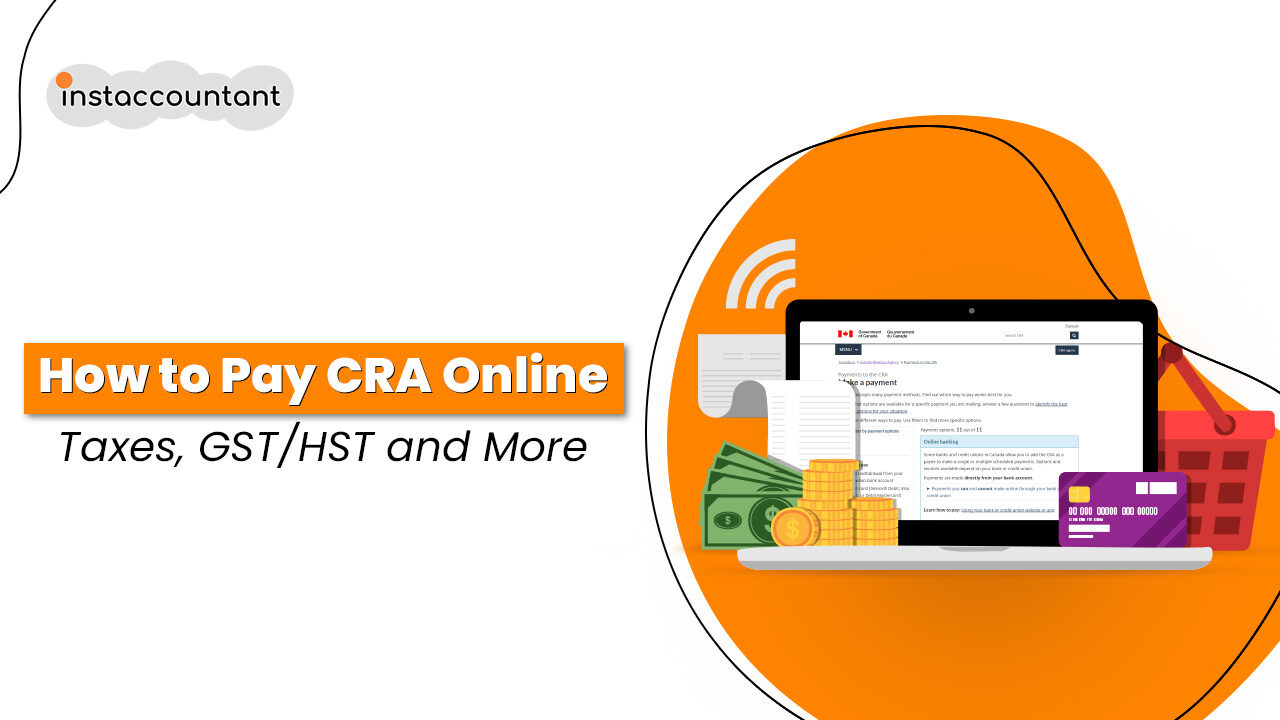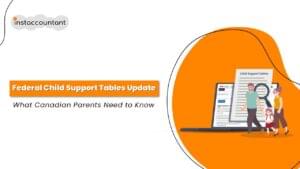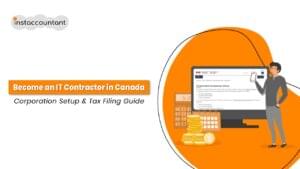Paying your taxes online to the Canada Revenue Agency (CRA) is a straightforward process that can save you time and the hassle of paper filings. Whether you need to handle your personal income tax, GST/HST, or corporate taxes, the digital method is accessible and efficient. Here’s a beginner-friendly guide to navigate through the payment process with ease.

What Can You Pay Online?
The CRA offers a wide range of online payment options for various tax and benefit obligations. Here’s a breakdown of what you can settle electronically:
- Income Tax: Pay your individual or self-employed income tax with ease.
- GST/HST: Submit your GST/HST remittances electronically if you’re a business owner.
- Source Deductions: Simplify payroll deductions like income tax, CPP contributions, and EI premiums.
- Benefits Repayments: Repay government benefits easily, such as the Canada Emergency Response Benefit (CERB).
- Other: Settle penalties, interest charges, and other CRA-related debts conveniently.
How to Make Online Payments to the CRA
When it comes to paying the Canada Revenue Agency (CRA) online, there are three primary methods:
1. Through Your Financial Institution’s Online Banking Platform:
This familiar method allows you to leverage your existing bank’s online services:
- Sign in to your bank’s online banking portal and navigate to the “bill payments” or “add payee” section.
- Search for the CRA using its business number (listed on the CRA website) or payee name.
- Enter your Social Insurance Number (SIN) for individual accounts or your business number for business accounts as the CRA account number.
- Specify the payment amount and the exact tax type (e.g., income tax, GST/HST).
- Follow the on-screen instructions to finalize the payment.
2. Using the CRA’s My Payment Service:
This service caters to individuals and businesses seeking a direct debit card payment option:
- You’ll need a valid Visa Debit, Debit MasterCard, or Interac® Online debit card issued by a participating Canadian financial institution.
- Visit the “Payments” section of the CRA website and navigate to “My Payment.”
- Enter your valid debit card information, the payment amount, and the specific tax type.
- Important Note: The CRA does not accept credit card payments through My Payment.
3. Scheduling Payments Through CRA My Account or My Business Account:
This option allows you to plan ahead and automate future payments:
- Log in to your CRA My Account or My Business Account (applicable accounts only).
- Navigate to the “Payments and Credits” section.
- Choose “Schedule a payment” and follow the on-screen prompts to set up recurring payments. Payments can be scheduled at least 5 business days before the due date.
Step-by-Step Guide to Paying Taxes Online
- Register for CRA My Account: Before you do anything else, you’ll need to sign up for My Account on the CRA website. This is a personalized portal where you can manage your taxes, track your refund, check your benefit and credit payments, and more. You’ll need your Social Insurance Number (SIN), date of birth, and a recent tax return to complete registration.
- Gather Your Financial Documents: Before making a payment, calculate the amount you owe or confirm it by checking your Notice of Assessment or logging into My Account. Double-check your figures to avoid any mistakes.
- Choose Your Payment Method: The CRA offers several ways to pay — online banking, debit card via third-party service providers, pre-authorized debit, and more. For the most seamless experience, use your bank’s online payment service.
- Pay Through Online Banking: Log into your online banking platform. Usually, you will find a section titled ‘Pay Bills’ or ‘Make a Payment’. Here, add CRA as a payee. You’ll find separate options for paying personal taxes, GST/HST, payroll deductions, and corporate taxes. Be sure to select the correct one. Enter your Social Insurance Number or Business Number as your account number.
- Enter Payment Information: Once the correct payee is selected, input the amount you are paying and choose the account from which the funds will be withdrawn. Carefully verify the details to ensure everything is correct.
- Keep Your Confirmation Number: After processing the payment, write down your confirmation number. It’s proof of payment and will be handy if there are any discrepancies in the future.
- Receipts and Record-Keeping: Depending on your bank, you may get an automatic receipt. Keep it for your records. I also recommend checking your CRA My Account after a few days to confirm that the payment was received.
- Set Up Future Payments: If you want to avoid the hassle of remembering due dates, consider setting up pre-authorized debits through your CRA My Account. This way, payments are automatically deducted from your bank account.
Additional Tips
- As of January 1st, 2024, payments or remittances to the Receiver General of Canada over $10,000 should be made electronically. While the option to send payments by cheque remains available, the CRA is encouraging electronic payments for their ease and security.
- Consider exploring the CRA’s mobile app for added convenience. The app allows you to view your account information, track your tax return status, and potentially make payments depending on your account type.
Responsibilities and Resources
Always remember that paying taxes as an individual or a business owner is part of your legal responsibilities. Paying the CRA online is a secure, efficient, and time-saving solution. By following these steps and incorporating the provided tips, you can streamline your tax payments and minimize stress during tax season.
Remember, the CRA website serves as your ultimate resource for everything related to online payments and tax filing. Visit their website regularly for the latest information and updates.




